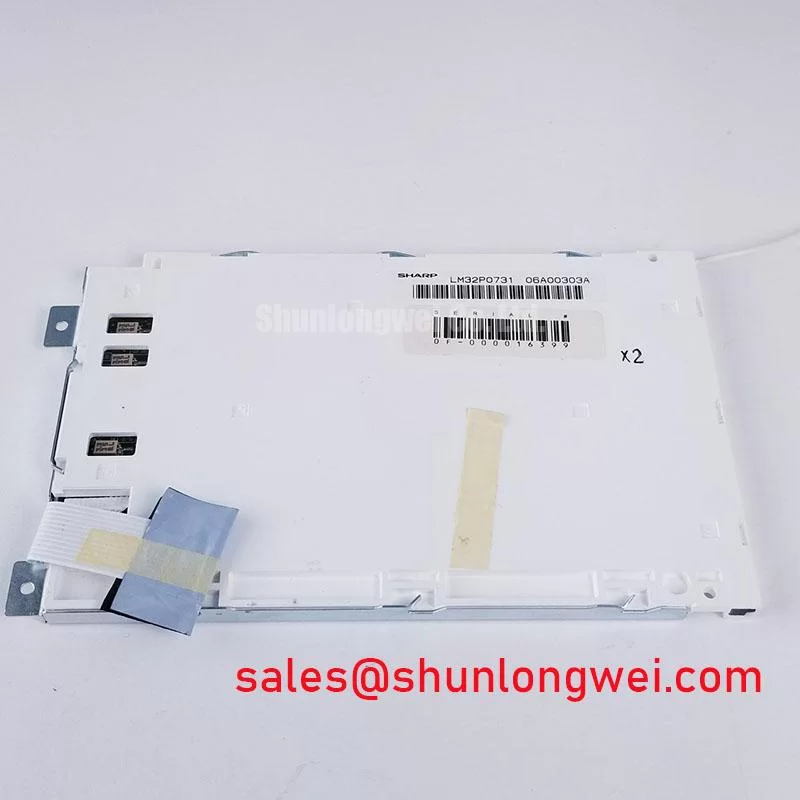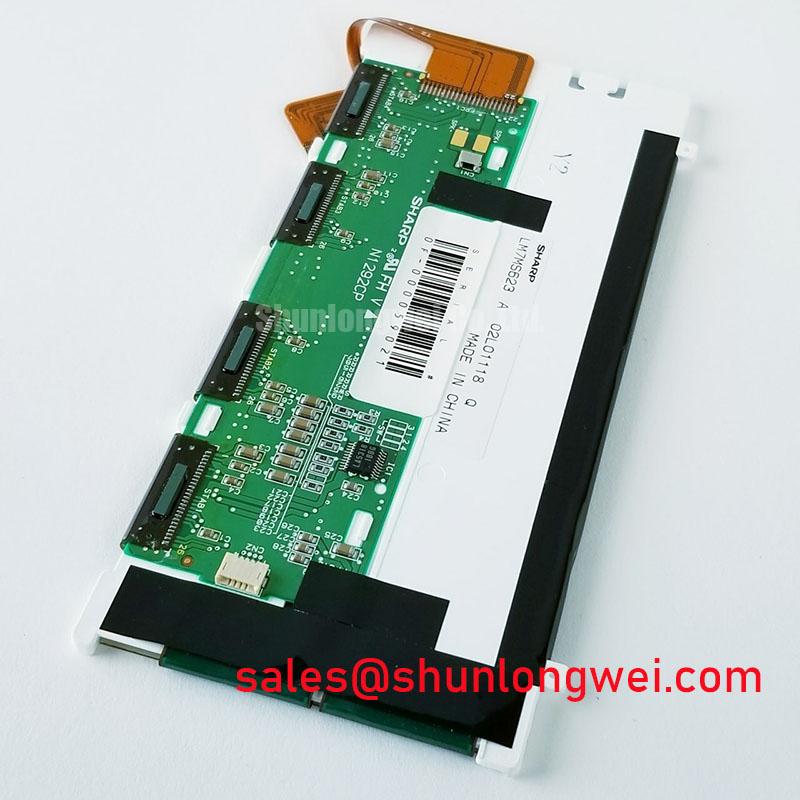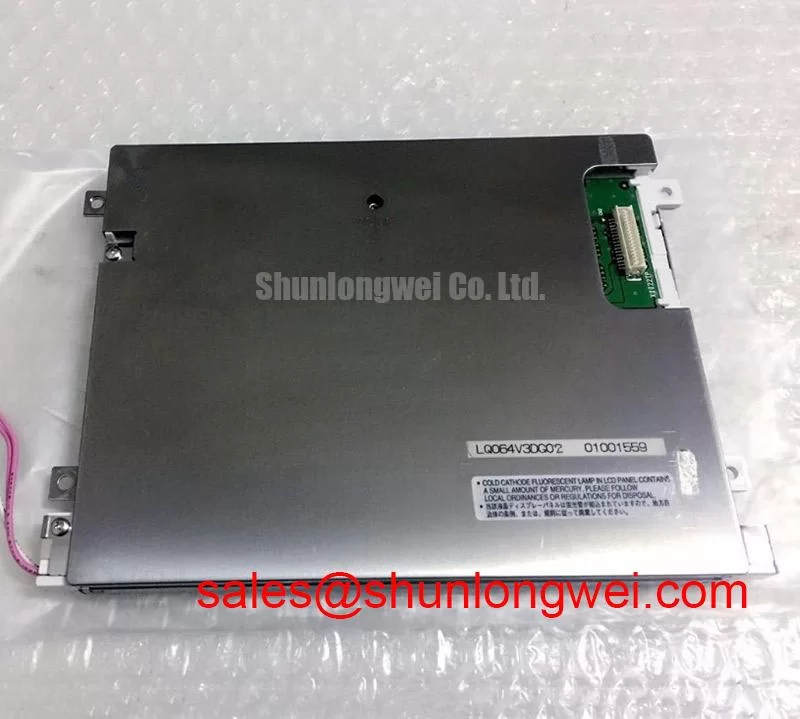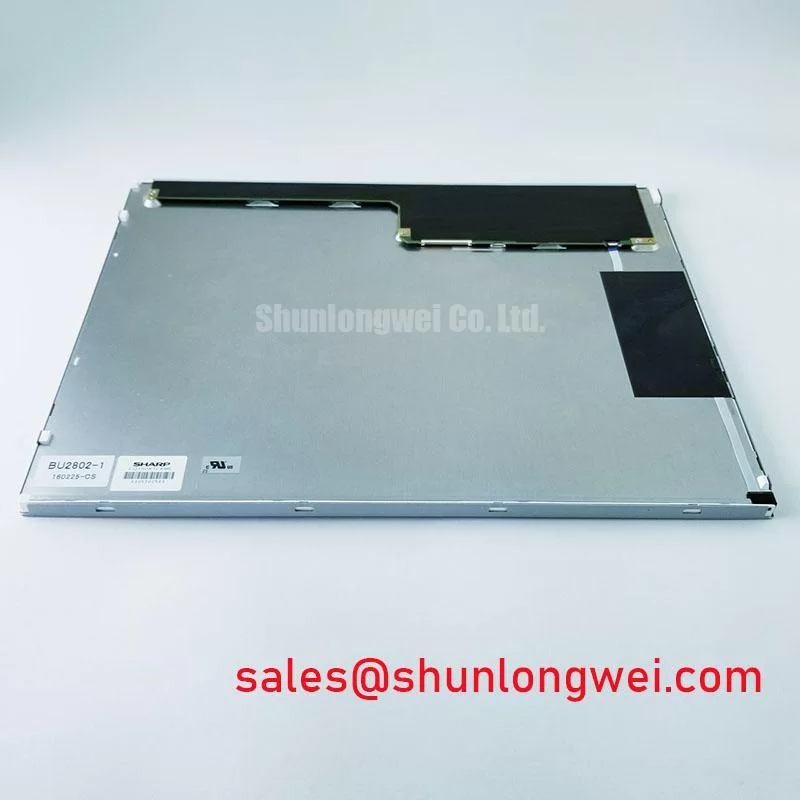Content last revised on November 16, 2025
Sharp LQ150X1LG81: Engineering Reference for Industrial & Medical Displays
Engineered for Clarity and Longevity in Demanding Visual Applications
The Sharp LQ150X1LG81 is a 15.0-inch a-Si TFT-LCD module delivering consistent, reliable visual performance for industrial and medical HMI applications. It provides a stable XGA resolution platform with a focus on long-term operational integrity and clear image reproduction. Key specifications include: 15.0-inch Diagonal | 1024x768 (XGA) | 350 cd/m² Brightness | 50,000-Hour Backlight Life. The module's robust CCFL backlight system and standard LVDS interface are engineered for sustained performance and straightforward system integration. This display addresses the critical need for a dependable, long-life panel in environments where frequent replacement is not feasible. For systems requiring a higher brightness specification for more varied ambient light conditions, the related G150XNE-L01 may be a consideration.
Key Parameter Overview
Decoding the Specs for System Integration and Reliability
The technical specifications of the LQ150X1LG81 are tailored for embedded systems that require a balance of proven technology and durable performance. The parameters below highlight its suitability for long-term deployment in controlled industrial environments.
| Parameter | Specification | Engineering Value |
|---|---|---|
| Screen Size | 15.0 inches | Provides a large, clear viewing area suitable for complex data visualization in industrial control panels and medical monitoring equipment. |
| Resolution | 1024x768 (XGA) | Offers a standard resolution that ensures compatibility with a wide range of existing software and hardware drivers, simplifying system upgrades. |
| Brightness | 350 cd/m² (Typ.) | Delivers sufficient luminance for clear readability in typical indoor industrial and medical settings. |
| Contrast Ratio | 550:1 (Typ.) | Ensures distinct separation between light and dark shades, critical for detailed graphical user interfaces and accurate image analysis. |
| Backlight System | 2 x CCFL, 50,000 hours (Typ.) | The dual Cold Cathode Fluorescent Lamp system is a mature technology known for its long operational life, minimizing maintenance cycles. |
| Signal Interface | LVDS (1 channel, 8-bit) | A robust, low-noise interface standard that ensures reliable data transmission between the display controller and the panel. |
| Operating Temperature | 0°C to 60°C | Suitable for deployment in controlled environments such as factory floors, control rooms, and medical laboratories. |
| Surface Treatment | Anti-glare, Hard coating (3H) | Reduces reflections from ambient light sources and provides a durable surface resistant to scratches, enhancing usability and longevity. |
Download the LQ150X1LG81 datasheet for detailed specifications and performance curves.
Application Scenarios & Value
System-Level Benefits in Industrial and Medical Environments
The LQ150X1LG81 is optimally designed for applications where long-term reliability and consistent performance are paramount. Its feature set provides tangible value in specialized Human-Machine Interface (HMI) systems.
A primary application is in the retrofitting or manufacturing of industrial control panels. Many legacy factory automation systems are built around the XGA (1024x768) resolution standard. Integrating the LQ150X1LG81 presents a direct, low-friction upgrade path, avoiding the need for costly redevelopment of graphical user interfaces. The panel's 50,000-hour backlight lifetime is a critical factor here; it equates to over 5.7 years of continuous 24/7 operation, aligning perfectly with the long service life expected of industrial machinery and reducing total cost of ownership.
In the medical field, this display is well-suited for non-diagnostic monitoring equipment, such as patient vital sign monitors or control interfaces for laboratory instruments. The 550:1 contrast ratio ensures that numerical data and waveforms are presented with clarity and precision, which is crucial for accurate readings by healthcare professionals. The anti-glare surface treatment minimizes reflections from overhead lighting common in clinical settings, further enhancing visibility.
Application Vignette
Enhancing Reliability in Legacy CNC Machine Control Systems
Consider the challenge of maintaining a fleet of Computer Numerical Control (CNC) machines where the original CRT or early-generation LCD displays are failing. System replacement is prohibitively expensive, and sourcing exact drop-in replacements is difficult. The primary engineering challenge is to find a modern panel that is electrically and mechanically compatible, and that guarantees a long service life to avoid future maintenance downtime.
The Sharp LQ150X1LG81 serves as an ideal solution. Its standard 15.0-inch size and XGA resolution often match the physical and software footprint of older systems. The single-channel LVDS interface provides a common, straightforward connection protocol. The most significant value is delivered by the 50,000-hour CCFL backlight. This is not just a number; it represents a commitment to operational uptime. For a factory manager, this means fewer service calls and more predictable production schedules. By integrating this panel, engineers can extend the life of valuable capital equipment, ensuring the CNC machine's HMI remains clear, reliable, and functional for years, directly impacting the bottom line through sustained productivity.
Intra-Series Comparison & Positioning
A Pragmatic Choice for Established System Designs
Within the broader landscape of 15.0-inch displays, the LQ150X1LG81 carves out a specific niche. While newer technologies may offer higher resolutions or wider color gamuts, the LQ150X1LG81's strength lies in its adherence to established, proven standards, making it a pragmatic choice for specific engineering requirements.
- Focus on XGA Standard: Unlike panels pushing WXGA or Full HD resolutions, the LQ150X1LG81 is purpose-built for the vast installed base of systems optimized for 1024x768. This makes it a go-to option for maintenance, repair, and operations (MRO) as well as for new products that leverage existing, validated software platforms.
- CCFL vs. LED Backlight: The module utilizes a CCFL backlight, a mature technology known for its predictable performance and long, established lifespan. While modern LED backlights can offer lower power consumption, CCFL provides a known quantity in terms of reliability and spectral output, which can be critical for applications with established color calibration needs.
- Operational Window: With an operating range of 0°C to 60°C, this panel is designed for indoor, controlled environments. It is not intended for outdoor or extreme temperature applications, positioning it specifically for factory floors, control rooms, medical facilities, and information kiosks.
In essence, the LQ150X1LG81 is not designed to compete on the latest cutting-edge specifications. Instead, it offers a high-reliability, long-life solution for the significant number of industrial and medical systems where compatibility and dependability are more critical than novel features.
Frequently Asked Questions (FAQ)
What is the primary benefit of the 50,000-hour CCFL backlight lifetime?
Its primary benefit is a significant reduction in total cost of ownership. This extended lifespan minimizes the need for maintenance and replacement, ensuring long-term operational continuity for equipment deployed in industrial or medical settings where downtime is costly.
Is an external inverter required for the backlight?
Yes, the datasheet explicitly states that a backlight-driving DC/AC inverter is not built into this module. System designers must incorporate a compatible external inverter to drive the dual CCFL lamps.
How does the 6 o'clock viewing direction impact usability?
The 6 o'clock viewing direction indicates that the optimal viewing position is from slightly below the center of the screen. This is a common characteristic of TN panels and is an important consideration for enclosure design, ensuring the display is mounted at an ergonomic height for the intended user.
What does the 8-bit LVDS interface signify for image quality?
An 8-bit LVDS interface allows the display to render approximately 16.7 million colors (often specified as 16.2M through techniques like FRC). This provides a rich and detailed color palette suitable for complex graphical user interfaces and imagery in its target applications.
Can the LQ150X1LG81 be used in life-support medical equipment?
The official documentation advises against using this device in applications requiring extreme levels of reliability, such as life-support systems, without implementing appropriate fail-safe and redundant designs. It is primarily intended for general electronic equipment, including non-critical medical monitoring devices.
An Engineer's Perspective on Integration
From an integration standpoint, the LQ150X1LG81 represents a known quantity. Its design prioritizes stability and compatibility over bleeding-edge performance, which is a significant asset in regulated industries or for long-lifecycle products. The use of a standard 20-pin LVDS connector simplifies the electrical interface, while the mechanical specifications provide a robust framework for mounting. The key consideration for the design engineer is the proper selection and shielding of the external CCFL inverter to prevent any potential EMI interference with the LVDS signal. By focusing on these fundamental integration principles, the LQ150X1LG81 delivers a reliable visual foundation for any system designed to last.












